Using video clips within speech therapy sessions is a great way to target goals while keeping students engaged and attentive throughout activities. You can find videos to use for students of all ages that include vocabulary, WH-questions, inferencing, predictions, story sequencing, story retell, fluency, speech articulation skills, and many more.
In this blog post, I’ll provide you with ways to incorporate video clips within your therapy sessions along with some video examples to use as well!
Reasons Why Using Short Videos in Speech Therapy Are Beneficial:
1. They Increase Student Engagement.
Students of all ages LOVE to watch videos! When students are engaged in what they are doing, they are more likely to retain information to then enhance the overall learning experience. Using short videos in speech therapy allows us to find materials to engage our students and then use the materials to target overall goals.
2. They Are Time Efficient.
Sometimes we don’t get the full amount of time we want with our clients. So, it’s important to plan sessions accordingly in order to target everything we need in the short time provided! Focusing therapy sessions around a short video may allow for a successful and time-efficient therapy session. Using a video clip introduces a topic into therapy to then guide the rest of the session. For example, if you show a short clip about springtime, you can use the video to introduce the topic of ‘Spring’ and then carry out that topic into the rest of the session!
3. They Spark Discussion.
Finding materials and activities to spark engaging conversation with our students is key! Short videos bring topics into therapy sessions that spark long conversations and discussions to support targeting speech and language goals. Students are able to discuss how the videos relate to them personally as well, allowing you to get to know your students even better. If you run a speech therapy group session, using short videos in speech therapy with your groups allows students to initiate conversation and discuss fun and exciting topics with one another.
How To Use Video Clips While Targeting Goals:
Back in 2018, I recorded a podcast (episode 42) titled, “How to Use Video Clips in Speech Therapy.” This recording touched on various goals you can target when using video clips, including vocabulary, WH-questions, fluency, story retell, sequencing, social skills, and inferencing. I suggest listening to this podcast along with reading this blog post in order to determine the best way to incorporate short videos within your therapy sessions.
Video Clip Examples:
The following is a list of video clip examples I’ve compiled, along with goals you can target as well as supplemental questions you may wish to ask your students:
INVISIBLE:
Invisible is an adorable video about a chameleon wanting to ask another chameleon to dance. This video allows your students to put themselves in someone else’s shoes and work on social thinking skills.
Suggested Grade Levels: 2nd-5th, 6th-8th
Video Length: 3 minutes
You can access the video here.
Goals I can target with this and supplemental questions I can ask:
Auditory Comprehension:
- What is the green chameleon trying to do?
- Why does the green chameleon become invisible, or disappear, every time he approaches the purple chameleon? Talk about chameleons and why they change color?
Inferences:
- What do you think will happen when the green chameleon gets close to the purple chameleon? Why?
Social Thinking:
- How do you think the chameleon feels throughout the beginning of the video?
- Why does the purple chameleon cry? What cheers her up? – you can talk about times your students may feel sad and what helps cheer them up in these situations.
Predictions:
- The title of this video is “Invisible.” What do you think this video will be about?
Vocabulary:
- What does ‘invisible’ mean? You can ask your students this question prior to watching the video and then again after. See if the video helped them understand the new vocabulary?
ORMIE:
Ormie is a fun and adorable wordless video clip about a pig problem solving his way to get cookies down from a refrigerator. There are so many opportunities to make predictions with your students while laughing at all of the pigs extreme attempts to get those cookies!
Suggested Grade Levels: PreK-5th
Video Length: 4 minutes
You can access the video here.
Goals I can target with this and supplemental questions I can ask:
Predictions:
- Pause the video as you get close to the end. Ask students how they think the video will end. Will Ormie get the cookies? How will he finally get the cookies down?
Problem Solving:
- Pause the video after Ormie has attempted to get the cookies a few times. Ask your students how else Ormie can try to get the cookies?
Social Skills/Perspective Taking:
- How do you think Ormie is feeling as he tries to get those cookies?
- What was your favorite way Ormie tried to get the cookies? Spark conversation with your students, especially if watching the video with a group of students. You can relate the video to personal experiences and go around the room talking about ways you have tried to reach things that were too high up.
WH-Questions:
- What does Ormie want?
- Why can’t he get the cookies?
- What happens at the end? Why can’t Ormie eat the cookies?
ANIMALS WITH WINTER COATS:
Let’s talk about arctic animals! Target new vocabulary while working on answering wh-questions with this informative video clip. Discuss animal migration and hibernation as we are approaching spring!
Suggested Grade Levels: K-5th
Video Length: 4 minutes
You can access the video here.
Goals I can target with this and supplemental questions I can ask:
Auditory Comprehension
- Name three ways animals stay warm when it is cold outside.
- The cleaner the arctic hare’s fur is, the _______ it keeps them.
- What happens to the arctic fox when the season changes?
Vocabulary:
- What does it mean when an animal migrates?
- What does it mean when an animal hibernates?
- What is the meaning of camouflage?
Main Idea:
- After watching the video, have your students discuss the main idea of the video and summarize what they learned.
BAD DAY?:
Check out this short commercial clip to make predictions and target inferences with your students. As winter is slowly coming to an end, your students may be able to relate to this hilarious video clip!
Suggested Grade Levels: 3rd-5th, 6th-8th, 9th-12th
Video Length: 1 minute
You can access the video here.
Goals I can target with this and supplemental questions I can ask:
Predictions:
- Before watching the video, tell your students the title. Ask them to discuss what they think may happen in the video. Talk about what it means to have a bad day and give examples of when they had a bad day.
Social Skills/Perspective Taking:
- How do you think the man is feeling when he walks outside?
- How do you think the man is feeling at the end of the commercial?
- Have you ever had a bad morning?
Inferencing:
- Why does the beginning title say, “Some people don’t like winter?”
WH-Questions:
- What do you think the man wishes he had?
GEORGE AND AJ:
Your students will enjoy this funny video clip about two men witnessing some interesting house departures.
Suggested Grade Levels: 2nd-8th
Video Length: 4 minutes
You can access the video here.
Goals I can target with this and supplemental questions I can ask:
Main Idea:
- After watching the video, have your students identify the main idea of the story. What is the point the video clip is trying to make?
Prediction:
- Pause the video in the middle and have your student predict what might happen next. Will there be another house departure? How do they think the house will depart?
Story Retell:
- Have your students watch the video through and then retell the story.
WH-Questions:
- What did the old man tell George and AJ he was going to do? What did he actually do?
- How did George and AJ react?
- What started happening to the other houses?
- Why did all of the older people want to get away?
Articulation:
- Have your student write down or shout out an object that has their target speech sound in the word when they see it in the video. For example, if your student is working on the /k/ sound, they can write down the word “car” when they see it. Once the video is over, you have an entire list of words to practice relating to the video.
*Reminders When Searching and Using Videos in Speech Therapy:
1. Find videos that are under 5 minutes long. Once you go over 5 minutes, the video can start to feel like it takes over your entire session! Of course, there are some videos you may find that are longer than 5 minutes, but may still be a great fit for your students. Just be sure to check your time and keep the video short in order to allow time to target your student’s goals.
2. Don’t be afraid of using wordless videos! Wordless videos are great to use to target all goals with students of all ages! These videos provide you with many moments to pause and reflect on what is happening. They are always great for targeting social skills including perspective-taking. Since there are no words spoken, you rely on body language and facial expressions within most of these videos.
3. Always watch all the way through before showing it to your students! Be sure to watch the videos all the way through before showing them within your sessions. You never know what you are going to find! So be safe and watch them first!!
I hope this post has inspired you to use video clips in your sessions in order to continue to support your students in meeting their goals!


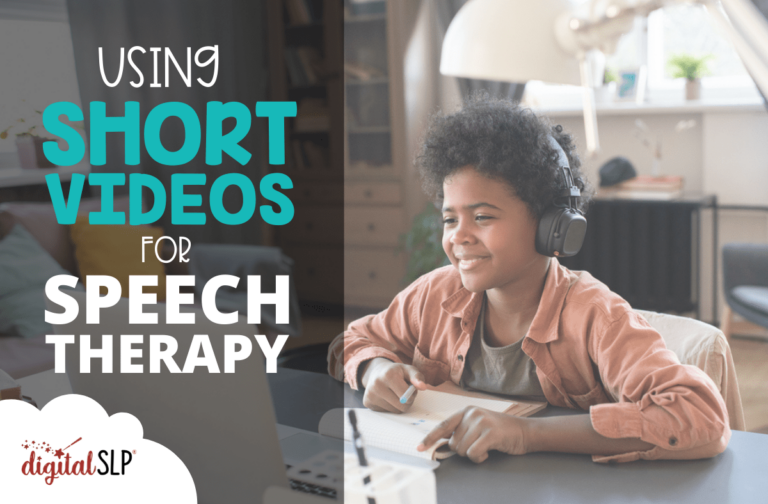



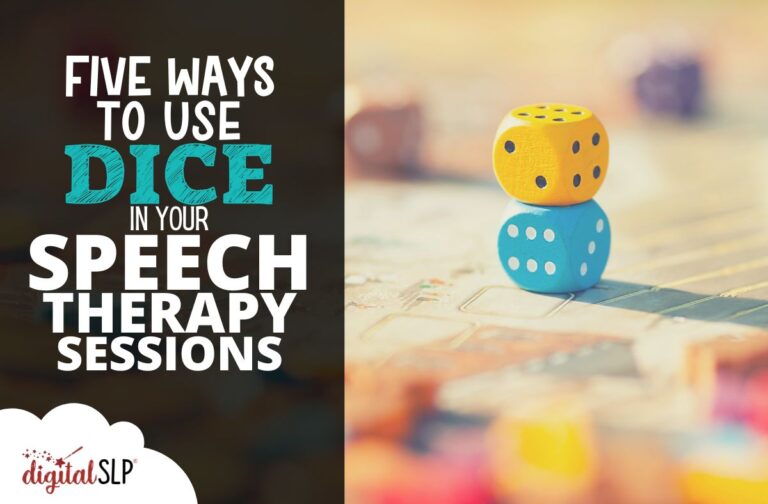
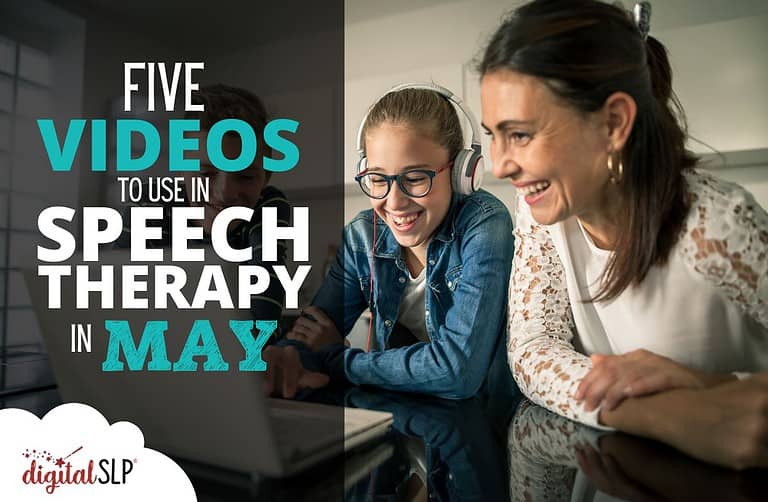
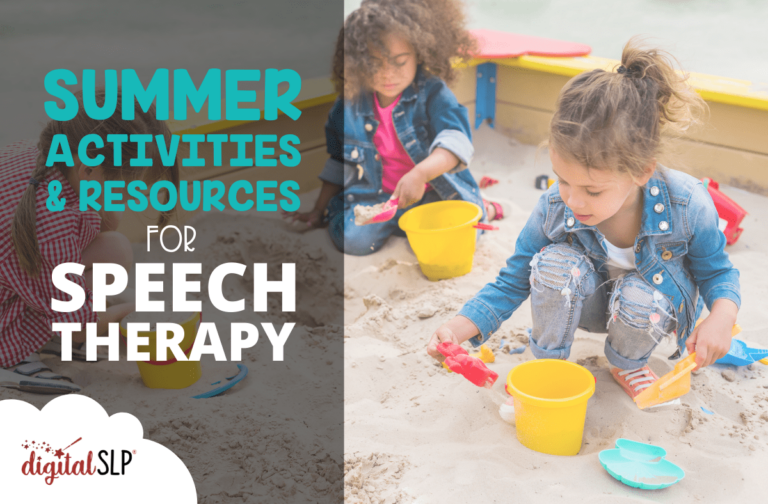
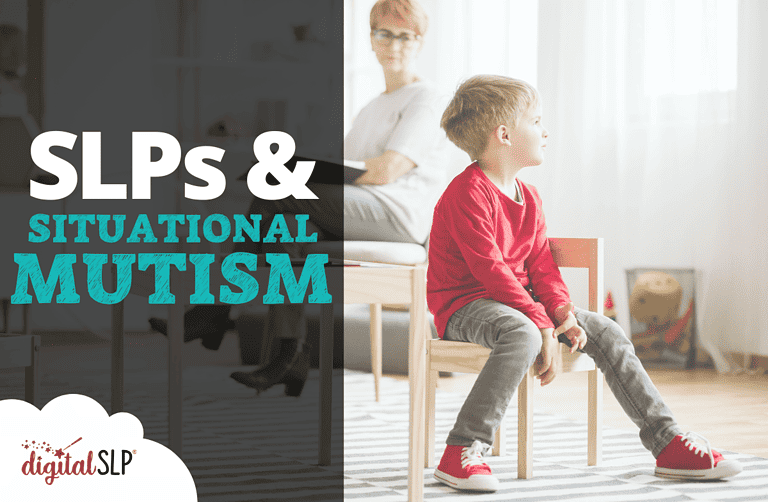
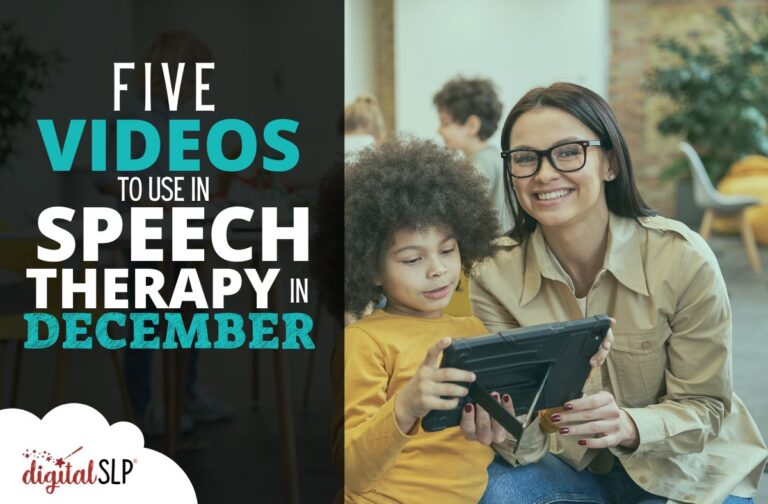


Recent Comments